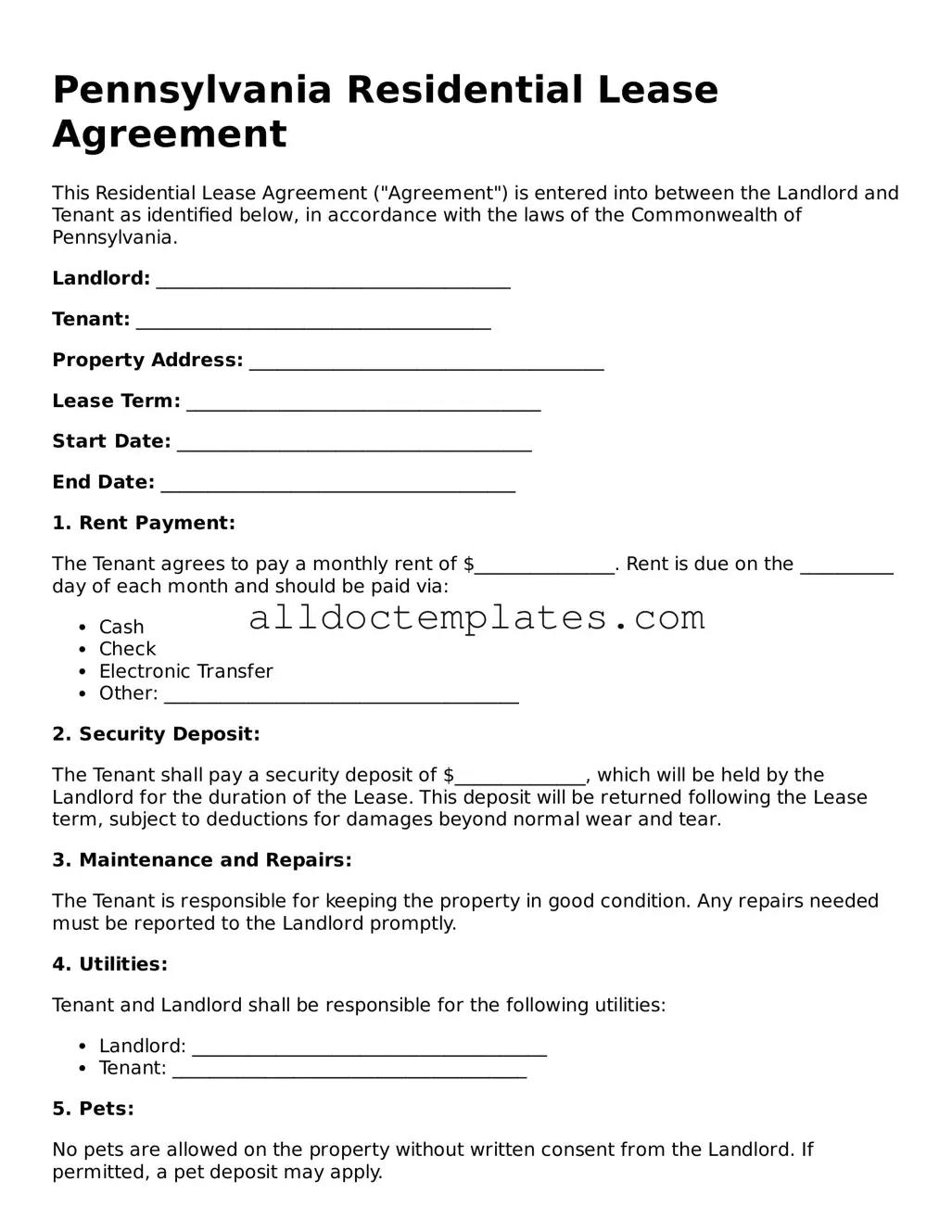Pennsylvania Residential Lease Agreement
This Residential Lease Agreement ("Agreement") is entered into between the Landlord and Tenant as identified below, in accordance with the laws of the Commonwealth of Pennsylvania.
Landlord: ______________________________________
Tenant: ______________________________________
Property Address: ______________________________________
Lease Term: ______________________________________
Start Date: ______________________________________
End Date: ______________________________________
1. Rent Payment:
The Tenant agrees to pay a monthly rent of $_______________. Rent is due on the __________ day of each month and should be paid via:
- Cash
- Check
- Electronic Transfer
- Other: ______________________________________
2. Security Deposit:
The Tenant shall pay a security deposit of $______________, which will be held by the Landlord for the duration of the Lease. This deposit will be returned following the Lease term, subject to deductions for damages beyond normal wear and tear.
3. Maintenance and Repairs:
The Tenant is responsible for keeping the property in good condition. Any repairs needed must be reported to the Landlord promptly.
4. Utilities:
Tenant and Landlord shall be responsible for the following utilities:
- Landlord: ______________________________________
- Tenant: ______________________________________
5. Pets:
No pets are allowed on the property without written consent from the Landlord. If permitted, a pet deposit may apply.
6. Termination:
This Agreement may be terminated by the Tenant or Landlord with at least ___________ days' written notice before the end of the Lease term.
7. Governing Law:
This Agreement shall be governed by the laws of the Commonwealth of Pennsylvania.
8. Signatures:
By signing below, both parties agree to the terms of this Lease Agreement.
Landlord Signature: __________________________ Date: ____________
Tenant Signature: __________________________ Date: ____________
